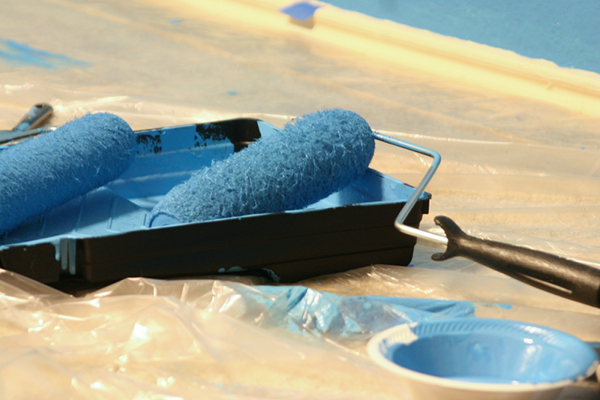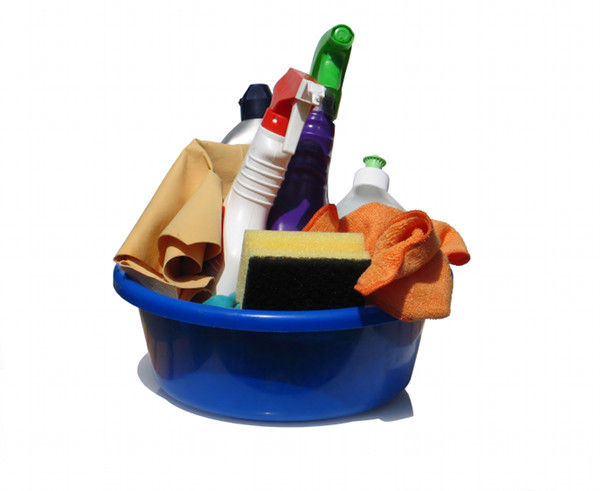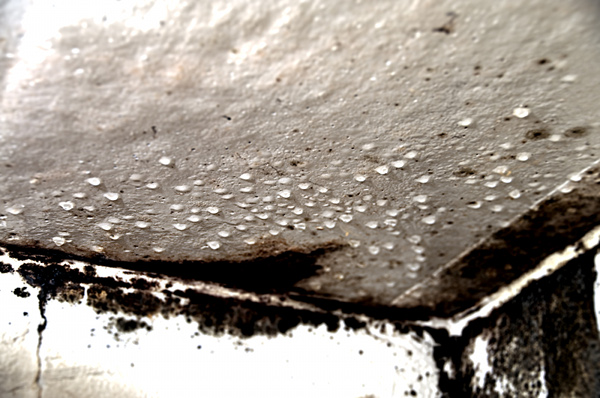Here’s a scary thought: according to the U.S. Environmental Protection Agency (EPA), the air inside our homes, schools and offices is two to five times more polluted than outdoor air. The average person in the US tends to spend around 90 percent of their time indoors, so that’s bad news for both you and your loved ones.
Even scarier is the fact that kids tend to be more susceptible to the ill health effects associated with pollutants. That’s due to the fact that kids take in more air, relative to body size, than full-grown humans, and as a consequence, their respiratory systems tend to be more vulnerable to certain chemicals, particles and allergens. Even the fact that they’re closer to the ground is a hazard, as this means they breathe in more of those heavier airborne chemicals.
So, trick or treat — here’s a rundown on five of the most common sources of indoor pollution at home, along with some sweet tips on how to keep the scary stuff out of your house.
Volatile Organic Compounds (VOCs)

Volatile organic compounds (VOCs) are unstable carbon-based compounds that readily vaporize into the air. When they enter the air, they react with other elements to produce ozone, which causes air pollution and a host of health issues including breathing problems, headache, burning, watery eyes and nausea. Some VOCs also have been linked to cancer, as well as kidney and liver damage.
Unfortunately, VOCs are emitted by, oh, almost everything. (Okay, maybe it just seems that way.) You’ll find VOCs in wide array of household products such as paints and lacquers, paint strippers, cleaning supplies, building materials and furnishings and office equipment (such as copiers and printers). Oh, and they figure heavily in the construction of most forms of flooring, including wood laminates and carpet.
The best way to keep VOCs out of the air in your home is simply not to let them in, as they cannot be filtered out of the air the way dust and particulates can. Formaldehyde is a common source of VOCs, and is a big player in pressed-wood/particle board furniture — so make sure to choose solid wood over pressed-wood products. Choose low- or no-VOC carpets, flooring and paint whenever possible. And if you can’t avoid the addition of a new product that off-gasses VOCs (even a new stone countertop can do so), make sure to introduce as much fresh air as possible into the affected room for the first few days after it’s installed.
You may want to consider opening the window when using the printer, too, as this is a little-known source of VOC-pollution in the home.
Chemical-based cleaning products

Gaiam reports that while a variety of human and animal studies have linked a wide range of chemicals common in household cleaning products with a wide range of health risks, the most offensive common ingredients are ethylene-based glycol (used commonly as a water-soluble solvent in cleaning agents and classified as a hazardous air pollutant by the EPA), and terpenes, a class of chemicals found in lemon, pine and orange oils that can morph into carcinogenic compounds when they mix with ground-level ozone.
Another noxious constituent is chlorine, often labeled as sodium hypochlorite or hypochlorite, which is almost ubiquitous in household cleaners. Breathing in its fumes can irritate the lungs, and as such can pose a serious health risk to those with pre-existing heart or respiratory problems.
So, how to get your home clean without compromising your health in the process?
Greener cleaning products are increasingly common these days, with companies like Seventh Generation and Ecover offering whole lines to tackle everything from your floors to your toilet bowl. But consider the homemade alternative as well — vinegar works as an excellent all-purpose cleaner, and baking powder can serve in the place of scouring powder. (Just don’t mix the two, or you’ll get the toilet-bowl equivalent of a sixth-grade science experiment.)
And if you must use chemical-based cleaning products, make sure to open windows while you’re working, and avoid mixing any products with hot water, which can serve to speed the release of chemical compounds.
Gas
Gas fuel for home heating and cooking is, on the whole, pretty safe — you don’t see a whole lot of news news of homes exploding. But according to Green Home Heroes, the long term health effects of living with a gas leak can be debilitating. Small gas leaks accumulate over time, and add a significant amount of pollutants to your home that can stress your immune system. A severe leak can reduce the amount of available oxygen resulting in dizziness, fatigue, nausea and headache. Lower concentrations can cause symptoms such as pneumonia, nausea, vomiting, irregular breathing, memory loss, and sinus pain. Some other adverse effects of gas exposure include flatulence, diarrhea, constipation, depression, pain in hands and legs.
Additionally, if you have a gas stove, you can release chemicals into the air at home simply by cooking or running the self-cleaning cycle. Gas ranges and toaster ovens in particular can off-gas VOCs, so make sure you turn on the fan in the hood and (again) open the window if possible while cooking.
Mold

Moisture caused by steam from showers, leaks or flooding can easily be absorbed by building materials, setting up long-term living conditions for mold colonies. According to the Centers for Disease Control, individuals sensitive to molds, and those with compromised immune systems in particular, can experience a wide range of adverse health effects associated with mold exposure, including nasal stuffiness, eye irritation, wheezing, or skin irritation.
In 2004 the Institute of Medicine found there was sufficient evidence to link indoor exposure to mold with upper respiratory tract symptoms, cough, and wheeze in otherwise healthy people; with asthma symptoms in people with asthma; and with hypersensitivity pneumonitis in individuals susceptible to that immune-mediated condition. Other recent studies have suggested a potential link of early mold exposure to development of asthma in some children, particularly among children who may be genetically susceptible to asthma development.
To prevent the growth of mold in your home, run the fan in the bathroom while showering, and repair water leaks promptly. For particularly damp rooms, consider running a dehumidifier. And if you need to eradicate mold that has already developed in your home, there’s no need to use bleach (see the entry above, on chemical-based cleaning products). Vinegar, tea tree oil, or a solution of borax and water will just as easily get the job done.
Freaked out by the scary stuff lurking at home? Don’t be! Indoor pollutants can easily greatly reduced or even eradicated with good green practices at home. And if you didn’t know — well, now you do.